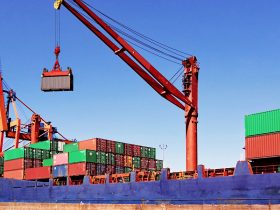
Australia’s Freight Transport Industry
Australia’s freight transport industry is a critical component of the national economy, supporting domestic commerce, international trade, and regional development. Due to Australia’s vast landmass, sparse population distribution, and heavy reliance on exports, the efficient movement of goods is essential for economic growth and competitiveness.
The industry operates across four main modes: road, rail, sea, and air. Each mode plays a unique role depending on the type of goods being transported, distances involved, and cost-effectiveness. Road freight is the most dominant form, accounting for the largest share of domestic freight movements. It offers flexibility, door-to-door delivery, and is heavily used in urban distribution and short to medium-distance hauls. Major players in road freight include companies like Toll Group, Linfox, and Mainfreight.
Rail freight is particularly important for bulk commodities such as coal, iron ore, and grain, especially in states like Western Australia and Queensland. It is also a vital link for intermodal freight, where goods are transferred between road and rail to improve efficiency. Companies like Aurizon and Pacific National are significant operators in this space. Rail is considered more environmentally friendly over long distances, contributing to Australia’s sustainability goals.
Maritime freight plays a pivotal role in international trade. Australia, being an island nation, depends heavily on sea freight to export resources such as coal, iron ore, natural gas, and agricultural products. The country’s major ports—such as Port of Melbourne, Port of Brisbane, and Port Hedland—handle a significant proportion of both import and export freight. Sea freight is also used for domestic transport along the coast, although this is less common compared to road and rail.
Air freight, while representing a small percentage of total freight volume, is vital for the movement of high-value, time-sensitive goods. It is most commonly used for items such as electronics, medical supplies, and perishable products. Airports in Sydney, Melbourne, and Brisbane are the main hubs for air cargo operations.
The freight industry in Australia is undergoing transformation due to technological innovation, infrastructure investment, and environmental concerns. The federal government’s National Freight and Supply Chain Strategy aims to improve efficiency, reduce congestion, and enhance resilience in supply chains. Investments in infrastructure, such as Inland Rail (linking Melbourne to Brisbane), aim to improve rail connectivity and reduce pressure on road networks.
Digital technologies are increasingly being adopted to improve logistics management, track goods in real time, and reduce operational costs. Environmental sustainability is also becoming a priority, with increasing interest in low-emission vehicles, rail electrification, and alternative fuels.
Despite its strengths, the industry faces several challenges, including workforce shortages, rising fuel costs, infrastructure bottlenecks, and regulatory differences between states. Addressing these challenges is essential to support Australia’s growing population, urbanization, and demand for goods.
In conclusion, Australia’s freight transport industry is a vital enabler of the economy. Its continued evolution, driven by innovation and strategic investment, will play a key role in supporting economic growth and meeting the needs of a dynamic, globalized trade environment.



Leave a Reply